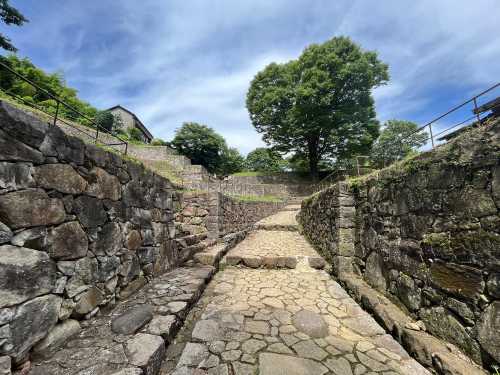Popular Trip Moments
[Gunma] 🇯🇵 Historical Village Mikazuki Village | Roadside Station Oe "Koramagase" | Recommended spots for architectural tours in Gunma | Yunoan: A spiritual retreat in a tranquil Japanese garden 🌿🏯 | [A public building that combines an art museum and a library] How about relaxing and reading a book or taking in the art museum's awards during Golden Week? | Kanayama Castle, one of the 100 famous castles in Japan, located in Gunma Prefecture | [Art spots in Ashikaga and Ota] | [Nittasho] (Ota City, Gunma Prefecture, former province name: Ueno) | [Nitakanayama Castle] (Ota City, Gunma Prefecture, former province name: Ueno) | 🇯🇵Ota Station, Gunma Prefecture, Japan [Bronze Statue of Nitta Yoshisada] A powerful statue of a warrior welcomes you!! | Roadside Station Ota | A castle ruin from the Warring States period that will leave you feeling romantic
Recommended Attractions at Popular Destinations
Bangkok attraction near me | Manila attraction near me | Tokyo attraction near me | Taipei attraction near me | Hong Kong attraction near me | Seoul attraction near me | Kuala Lumpur attraction near me | Los Angeles attraction near me | Shanghai attraction near me | New York attraction near me | Shenzhen attraction near me | Osaka attraction near me | Singapore attraction near me | London attraction near me | Guangzhou attraction near me | San Francisco attraction near me | Beijing attraction near me | Macau attraction near me | Bali attraction near me | Jakarta attraction near me | Paris attraction near me | Ho Chi Minh City attraction near me | Istanbul attraction near me | Phuket attraction near me | Chicago attraction near me | Seattle attraction near me | Toronto attraction near me | Orlando attraction near me | Cebu attraction near me | Chiang Mai attraction near me
Popular Attractions
Stone Forest Scenic Area | Louvre Abu Dhabi | Jungfrau | The Lost Chambers Aquarium | Pearl River Night Cruise | Santa Maria delle Grazie | Zoo Aquarium de Madrid | The Bund | Universal Studios Japan | Moscow Zoo | Yu Garden | Wat Arun | Nanjing Presidential Palace | Global Village | Taiwan Snack Street | Wumadu Square | La Perle | Aura Thai Spa | Oud Metha Metro Park | Castle Park Prießnitz | Surau/Musolla Taman Warisan | Chateau Lagrezette | Hayes Park | Sawah Muallimin DE | Lagoon Park | Bibliothèque de Morannes | Nishi Park | ISKCON TEMPLE | Großer Wasserstein | Shanghai Museum
Popular Restaurants in Ota
Gattenzushi | Wanrumukafe | Korakuen Ohtaiidachoten | Suitoto | Daidai | Kimuraya | Shoan | Starbucks Ion Mall Ota | Iwasakiya | Gohandokoro Yayoiken | Oshoramen | Mikawa | Tsurukamedo, Ota Araicho | Itarianresutoranpia | Mominoki | Ramen Yamaokaya, Ota | Shangri-La Moti Indian restaurant | Katsuhana-tei, Nitta | Tokaen | Maison Cachecache | Bisutekkabun | The Preston Cafe | Diverge | Hachioji Noen | Yokohama Le Loi, Ota | Chinese Restaurant Tominro | Otoya Aeon Mallota | Indian Cuisine Darbar | Yamada-Ya Main Store | Tsukiji Gindako Aeon Mallota
Popular Ranked Lists
Top 10 Local Restaurants in Dongyang | Top 3 Best Things to Do in Nanjiang | Top 4 Local Restaurants in Baoji | Popular Best Things to Do in Ziyuan | Top 3 Local Restaurants in Ulanqab | Top 10 Local Restaurants in Kaifeng | Popular Premium Hotels in Durango | Top 10 Local Restaurants in Enshi Prefecture | Popular Premium Hotels Near Kamyzyaksky District | Popular Best Things to Do in Boluo | Popular Premium Hotels in Pipa | Top 9 Local Restaurants in Pingyao | Popular Premium Hotels in Thap Put | Popular Luxury Hotels in Ramatuelle | Top 7 Local Restaurants in Zhongmu | Popular Best Things to Do in Lvliang | Top 3 Best Things to Do in Dazhou | Top 11 Local Restaurants in Liyang | Popular Premium Hotels in Fahaheel | Top 10 Local Restaurants in Yueyang | Top 5 Local Restaurants in Tianshui | Popular Best Things to Do in Xiaojin | Top 10 Local Restaurants in Ordos | Popular Premium Hotels in Mbabane | Popular Premium Hotels in Palakkad | Popular Luxury Hotels Near Palakkad | Top 5 Best Things to Do in Jingxi | Top 6 Best Things to Do in Ji'an | Top 9 Local Restaurants in Jining | Top 10 Local Restaurants in Xiangshan
Payment Methods
Our Partners
Copyright © 2025 Trip.com Travel Singapore Pte. Ltd. All rights reserved
Site Operator: Trip.com Travel Singapore Pte. Ltd.
Site Operator: Trip.com Travel Singapore Pte. Ltd.























